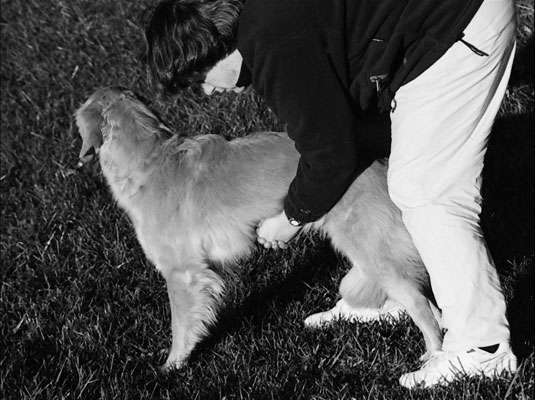Obesity causes many health problems in our dogs. Not only that, but research suggests that being overweight shortens a dog's lifespan by as much as two years. So, an overweight dog doesn't live as long as a lean animal, and their quality of life is significantly reduced.
Canine obesity is dangerous because it can lead to a great number of health problems. It may also adversely affect an existing health issue. The following diseases and disorders may be caused or worsened by obesity:
- Cardiac disease
- Diabetes Mellitus
- Hypertension (high blood pressure)
- Orthopedic injuries (such as cruciate ligament rupture or patellar luxation)
- Osteoarthritis
- Respiratory disorders
- Various forms of cancer
Determining if your dog is Obese
A dog who is a healthy weight will have palpable ribs, with some-- but very little-- fat covering them. You should be able to feel your dog's ribs easily, without having to strain or struggle. If it is difficult to feel your dog's ribs, he is likely overweight. If it is impossible, he is probably obese.
Like the ribs, the spine's visibility and palpability are clear indicators of a pet's health when it comes to weight. While underweight dogs have prominent spines and healthy dogs have spines that feel bony, overweight pets tend to have thick deposits of fat on and around the spine.
A healthy animal shows a visible "abdominal tuck." The area between the ribs and the groin is visibly lean and tucked. Overweight animals have little abdominal tuck and obese dogs might lose the tuck entirely, instead having a distended belly that sags downward.
- Diabetes
- Cushing’s Disease
- Hypothyroidism
- Portion Control: Be sure to follow the feeding guidelines on your pet foods packaging. Always use a measuring cup to ensure proper measurement. If you feed more than once per day, figure out your pets daily allowance and 1/2 in the morning and 1/2 in the evening.
- Treats: One of the biggest mistakes pet owners do is offer too many treats. Instead try to offer a healthier option, such as baby carrots, snap green beans, apple wedges, plain rice cakes (with no salt or sugar added). You can also make healthy treats by mixing plain canned pumpkin and non-fat plain yogurt in equal portions and freezing them into bite sized snacks! It is important to remember that even too much of a good thing can be bad, so offer these treats in moderation. Please stay away from grapes, onions, macadamia nuts, and raisins as they can be toxic.
- Exercise: Exercise increases energy and promotes calorie burning, as well as toning muscle. Begin slowly by walking your dog on a leash for 10 minutes a day. Depending on your dogs condition you can increase a little each week until you reach 30 minutes per day. Not only will your dog benefit from this, but so will you!


